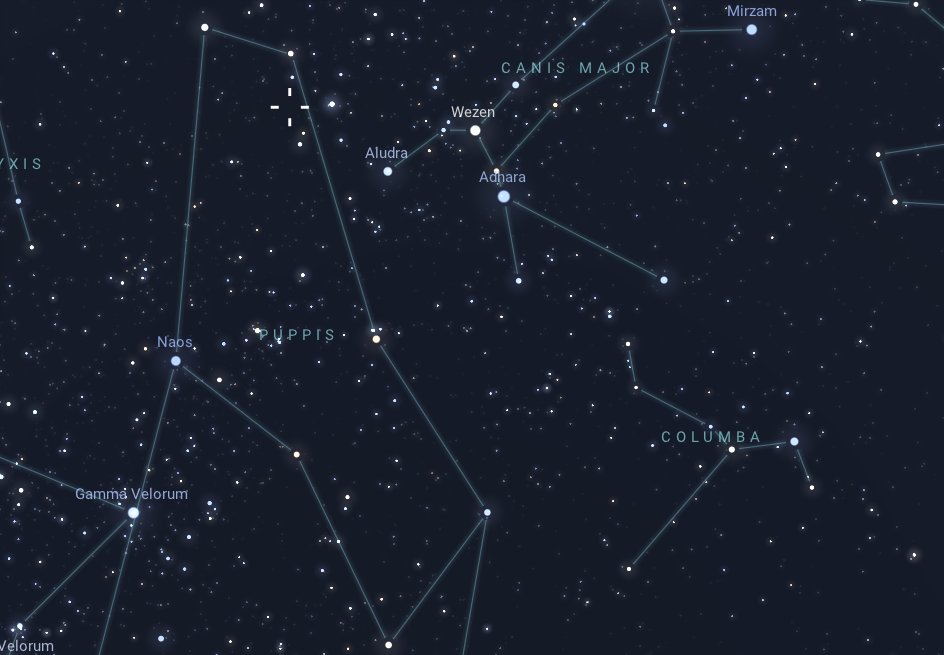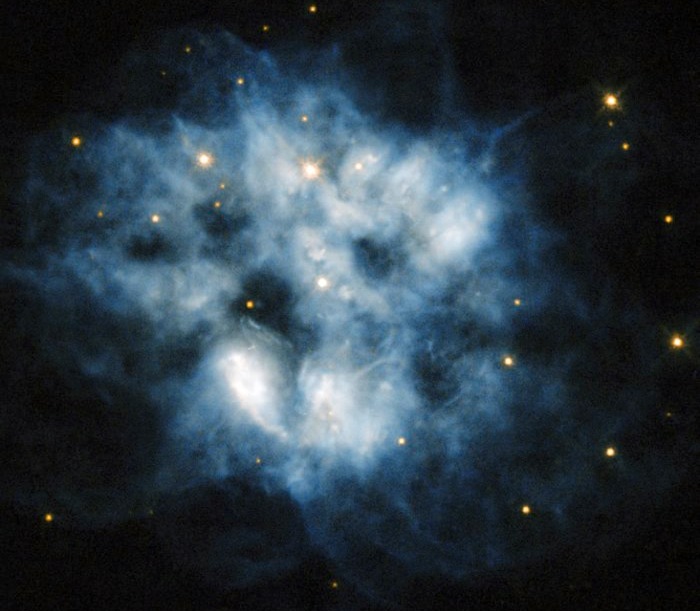NGC 2452 is a planetary nebula situated in the southern constellation Puppis, which was once part of the larger constellation Argo Navis. It lies approximately 11,600 light years from Earth and is located within a dense star field of the Milky Way, making it a fascinating but challenging target for observers.
The nebula was discovered by the British astronomer John Herschel in 1834 during his observations from the Cape of Good Hope in South Africa. Here are some key details about this celestial object:
Composition
Like other planetary nebulae, NGC 2452 consists mainly of ionized gas, including hydrogen and helium, along with trace amounts of heavier elements such as oxygen, nitrogen, and carbon. These elements were expelled from the outer layers of the progenitor star during the late stages of its evolution, giving rise to the surrounding nebula. The vibrant colours observed in planetary nebulae, including NGC 2452, are caused by the ionization and subsequent emission of light as these gases are energized by the intense ultraviolet radiation from the nebula’s central star. The bluish-green tint often associated with the nebula is typically due to the emission from doubly ionized oxygen (O III).
At the heart of NGC 2452 lies a white dwarf, the hot and dense remnant of the original star. The central star emits strong ultraviolet light, which ionizes the surrounding gas and causes it to glow. Over time, the white dwarf will cool and fade, and the nebula will gradually disperse into the interstellar medium, enriching future generations of stars with heavier elements. The combination of dust and ionized gas makes this nebula both a visually striking object and a valuable laboratory for studying stellar evolution and chemical enrichment of the galaxy.
Size
NGC 2452 spans approximately 30 arcseconds across the sky, making it quite small and challenging to observe without high-powered telescopes. Its physical size in light-years has not been precisely determined, but given its planetary nebula classification and distance of about 11,600 light-years, it likely extends just a few light-years across. This compact size is typical of planetary nebulae, which represent the expelled outer layers of dying stars
Observation
NGC 2452 appears as a faint, round, or slightly elongated nebula when viewed through a telescope. Due to its low brightness, it is not easily visible with binoculars, and its appearance can vary depending on the quality of observing conditions and equipment used.
The nebula is best observed from southern latitudes, where it rises higher in the sky. Observers at low northern latitudes can also spot it, provided they have a clear view toward the southern horizon. While NGC 2452 can technically be observed throughout the year, the ideal viewing period is January to March (winter to early spring), when the constellation Puppis is higher in the sky and visible for longer periods during the night.




